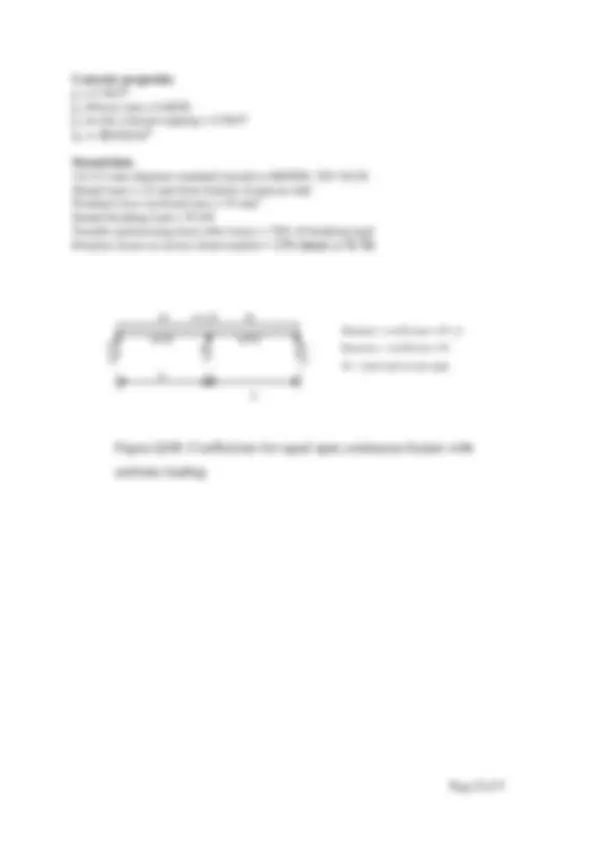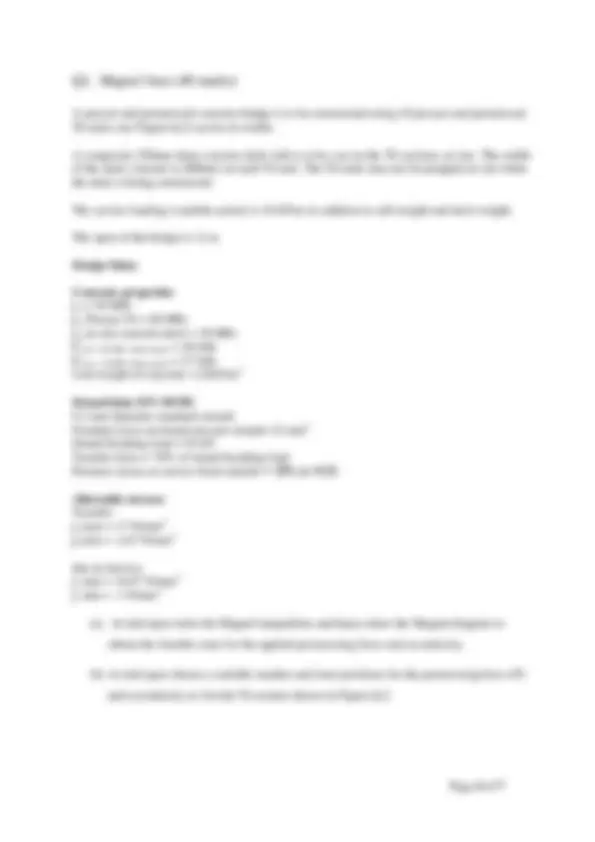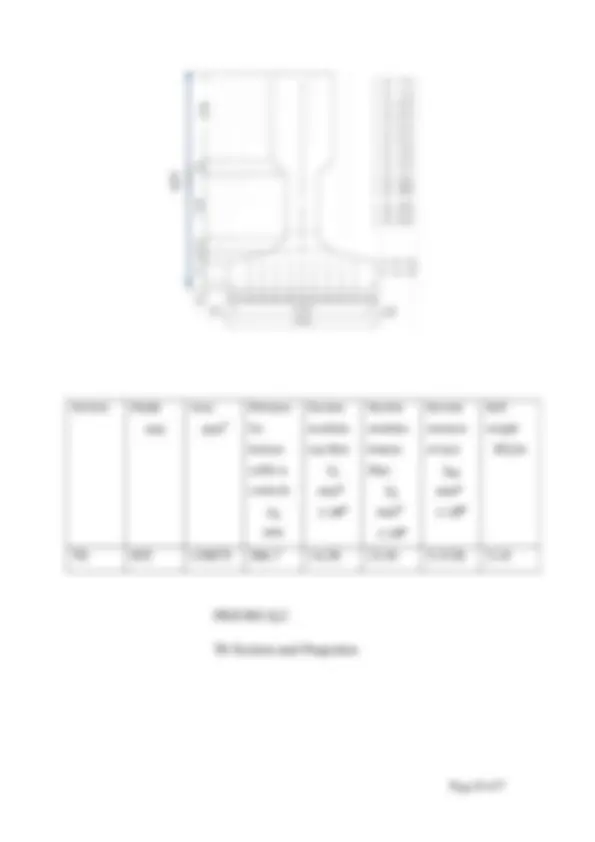





Study with the several resources on Docsity

Earn points by helping other students or get them with a premium plan


Prepare for your exams
Study with the several resources on Docsity

Earn points to download
Earn points by helping other students or get them with a premium plan
Community
Ask the community for help and clear up your study doubts
Discover the best universities in your country according to Docsity users
Free resources
Download our free guides on studying techniques, anxiety management strategies, and thesis advice from Docsity tutors
An examination paper for the module 'prestressed concrete' (civl8013) in the bachelor of engineering (honours) in structural engineering programme at cork institute of technology. Instructions for the examination, figures and design data for two questions related to stress limitations and magnel lines in prestressed concrete structures.
Typology: Exams
1 / 7

This page cannot be seen from the preview
Don't miss anything!




Autumn Repeat Examinations 2012
Module Code: CIVL
School: Building and Civil Engineering
Programme Title: Bachelor of Engineering (Honours) in Structural Engineering
Programme Code: CSTRU_8_Y
External Examiner(s): Dr. Mark G. Richardson
Mr John O’Mahony
Internal Examiner(s): Mr. Brian D. O’Rourke
Instructions: Three Question are to be attempted
Questions 1 and 2 are compulsory
Attempt either Question 3 or Question 4
Total 100 marks
Duration: 2 hours
Sitting: A utumn 2012
Requirements for this examination: Mathematics Tables.
Students may use their Extracts to the Structural Eurocodes, and the Approved Design Aids
Booklet.
Note to Candidates: Please check the Programme Title and the Module Title to ensure that you have received the correct examination paper. If in doubt please contact an Invigilator.
A section of a precast and prestressed concrete 100 mm thick solid plate floor unit with a composite 150 mm in-situ concrete topping screed is shown in Figure Q1A. The precast unit and composite slab are to span 7.7 m simply supported. The over-all depth of the composite slab is 250 mm. In addition to its self-weight, the imposed design load (variable action) on the slab is 3.0 kN/m^2. The building occupancy is residential use. The precast unit has a breadth 1.2 m and is prestressed with 12 no. 9.3mm diameter steel strands over that width. The precast unit specifications require that the precast slab must be propped at mid-span on site after it is placed in position, but before the in-situ screed is placed, and that this propping must remain in position until the in-situ screed reaches its specified strength. Figure Q1B gives design coefficients for prop reactions and moments.
From consideration of top and bottom fibre stresses at mid-span only for a span of 6.35m , check: (a) Transfer stresses
(b) Site stage stresses (assume imposed loading due to workmanship = 1.5 kN/m^2 )
(c) Service stresses
EC 2 (IS EN 1992-1-1) characteristic limits of stress and design situation should be applied for compressive stresses. No tensile stresses are permitted at any stage of loading. Figure Q1B gives design coefficients for prop reactions and moments.
Design Data:
Precast unit Design width = 1200 mm IN.A. precast unit = 100 x 10^6 mm^4 Depth to neutral axis from top of Precast unit = 50 mm Cross-sectional area, A = 120000 mm^2
150 mm in-situ screed
100 mm precast slab
1200 mm
Strand inset 25mm
A precast and prestressed concrete bridge is to be constructed using 10 precast and prestressed T6 units (see Figure Q.2) across its width.
A composite 250mm deep concrete deck slab is to be cast on the T6 sections on site. The width of the deck concrete is 600mm on each T6 unit. The T6 units may not be propped on site when the deck is being constructed.
The service loading (variable action) is 10 kN/m in addition to self-weight and deck weight.
The span of the bridge is 12 m
Design Data:
Concrete properties f ci = 30 MPa f ck Precast T6 = 60 MPa f ck in-situ concrete deck = 30 MPa E (^) f ck = 60 MPa (short-term) = 30 GPa E (^) f ck = 30 MPA (short-term) = 27 GPa Unit weight of concrete = 25kN/m^3
Strand data (EN 10138) 9.3 mm diameter standard strands Nominal cross-sectional area per strand= 52 mm^2 Strand breaking load = 92 kN Transfer force = 70% of strand breaking load Prestress losses at service from transfer = 20% (α =0.8)
Allowable stresses Transfer f o max = 17 N/mm^2 f o min = -2.67 N/mm^2
Site & Service f s max = 16.67 N/mm^2 f s min = -1 N/mm^2
(a) At mid-span write the Magnel inequalities and hence draw the Magnel diagram to obtain the feasible zone for the applied prestressing force and eccentricity.
(b) At mid-span choose a suitable number and inset positions for the prestressing force (P) and eccentricity (e) for the T6 section shown in Figure Q.
Section Depth
2
Area Distance for bottom soffit to centroid 3
Section modulus top fibre
3
Section modulus bottom fibre 4
Second moment of area ⁄
Self- weight
Figure Q4 shows the cross section of simply supported inverted prestressed concrete transfer beam that is required to span 11.0 metres. The service mid-span maximum bending moment is 360 kNm in addition to self-weight, which is the only loading acting at transfer. From consideration of limiting stresses at the extreme top and bottom fibres:
(a) Derive from first principles inequalities that can be usefully used to check if the section is acceptable for bending stress about its major axis for any level of prestress force. (12 marks)
(b) Check that the cross-section in Figure Q4 satisfies these inequalities. (8 marks)
Allowable stresses Transfer f o max = 17.5 N/mm^2 f o min = -2.75 N/mm^2
Service f s max = 16.67 N/mm^2 f s min = -3.2 N/mm^2
Prestress loss factor (effective prestress) at service α = 0. Take the unit weight of concrete = 25 kN/m^3
9 00mm x 80 mm
46 0mm x 80 mm
560 mm x 80 mm